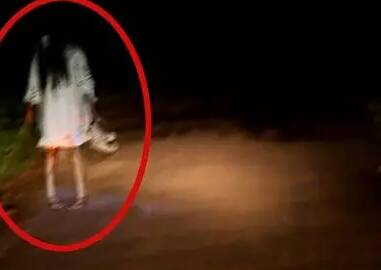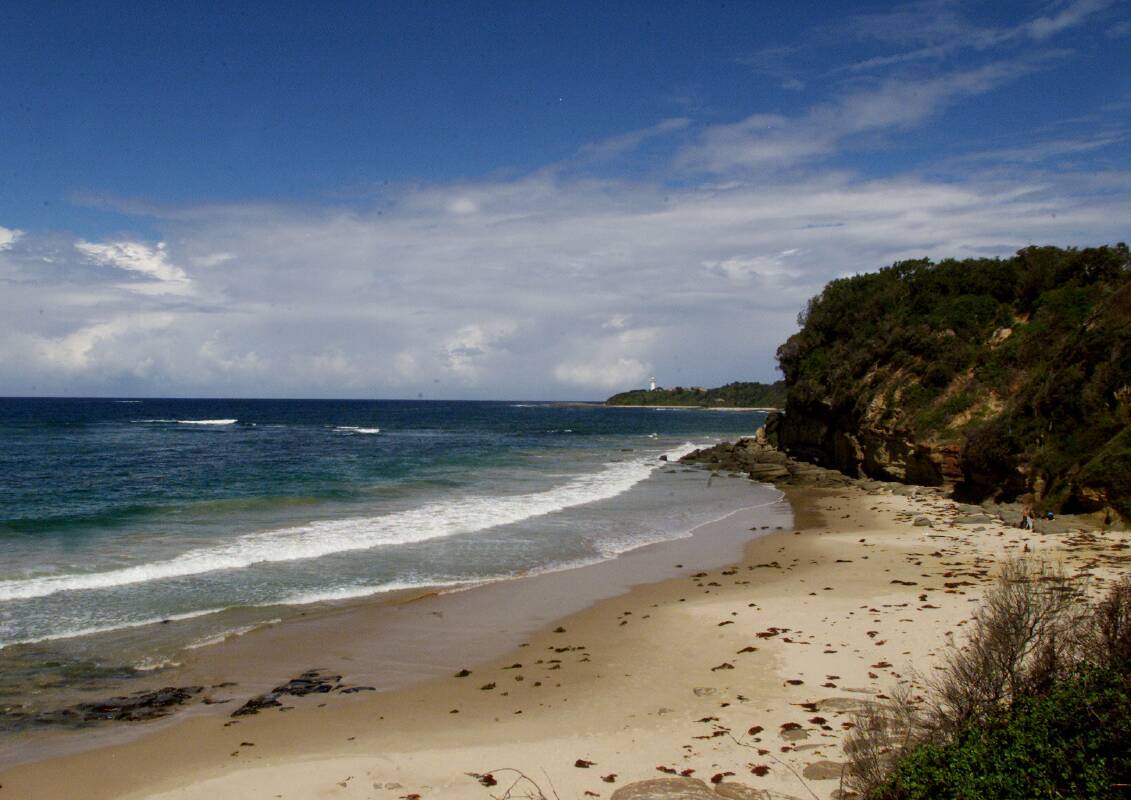She was headed south on Wilfred Barrett Drive when she saw her.
It's a dark drive at night down through the narrow spit of land that connects Noraville to The Entrance. The stretch of dense coastal scrub separating Tuggerah Lake from the Pacific is thick with overgrowth and little light along the road.
The driver was only 17 and was heading south when she felt the chill come out of the Plutonian night. She went to adjust the air-conditioner, and in that fraction of a second, the spectre appeared as her eyes left the road.
"I looked up and saw her in the middle of the road. She had a white dress and long brown hair. Her arms were outstretched in the air," the teen, who spoke anonymously, said. "Then she disappeared."
The tale of the hitchhiking ghost of Wilfred Barrett Drive is a famous local myth on the Central Coast. The story goes that lonesome travellers are tempted to stop and help the young woman who appears out of the night, hand outstretched and signalling for a lift.

The spectral traveller rides in the back seat for a stretch through the darkest part of the way. Conversation trails off, the stories say, and after a while, the visited driver realises they have been talking to themselves all the time. A glance in the rear view shows that the phantom has vanished somewhere along the road.
Sightings of the famous ghost come up occasionally, and the story has fascinated the superstitious for decades.
The ghostly hitchhiker is widely believed to be a young woman brutally killed in the area at some time in the 1970s, but like many such ghost tales, the details are suspiciously murky.
The conventional wisdom suggests that a young woman was abducted by "five young men" on the road in the 1970s. She was brutally assaulted and left to die of her injuries on the nearby Janet Dixon beach. Her ghost is said to haunt the road, searching for justice, while the unidentified killers, in some retellings, consequently die in mysterious circumstances.

It would seem unlikely that such a sensational crime from our relatively recent history would escape the headlines, but searches through the archive have come up with no such mention. NSW Police confirmed on Thursday that while local officers knew the tale, it was little more than a local legend.
But what police describe as the impossibility that such a case was investigated in the area doesn't mean that the tale of the Central Coast's most famous ghost doesn't have something to teach us.
A little-known report buried in the archives of the Australian Institute of Criminology lists 47 NSW sex homicides in the decade from 1969 to 1981. The report, which was commissioned to provide a better understanding of how, why and how often homicides happen in the state, found that killings that were committed in the course of sexual assault were a relatively tiny minority of homicides during that time, accounting for just below five per cent of all such killings.
The report found that, in the relative absence of serious consideration at that time about how and why homicides happen, the public imagination was drawn to "popular stereotypes about murder and the murderer (that) have inevitably affected public debate on matters of crime causation, legislative reform and the treatment of offenders". Rather than killing being a random act by deranged or pathological people, the data showed that homicide was instead "socially, historically and culturally determined" and comprised a variety of offenders and victims in different social settings.
The mysterious case of the Mayfield hole
In less macabre, but no less mysterious news, it seems that the case of a hole that seemingly belongs to no one has been haunting residents of Gamack Street at Mayfield for more than a year.
A small group of locals took a tongue-in-cheek approach this week and threw the hole - which has been surrounded by construction hoardings for the past 12 months - a birthday party complete with a banner and cake.
Residents have complained that fixing the hole has stalled because of some confusion between local council, teh NBN Co and Telstra over whose hole it is, and who is responsible for hill-ifying the void.
Spokesmen for both the NBN Co and Telstra said that they had looked into the matter yesterday. Both said the hole was not theirs, but NBN said they would be in contact with council over the matter. The City of Newcastle has been contacted for comment.
Council has however been in contact to let us know that it's going eco by doing away with paper timesheets for its employees. The drastic move to join the rest of the world in the digital century has been lauded as saving up tpo 12 tonnes of paper annually and a billion litres of water. Council's 1200 employees will now move to a automated self-service tool, according to a statement by PR firm Addy PR.







